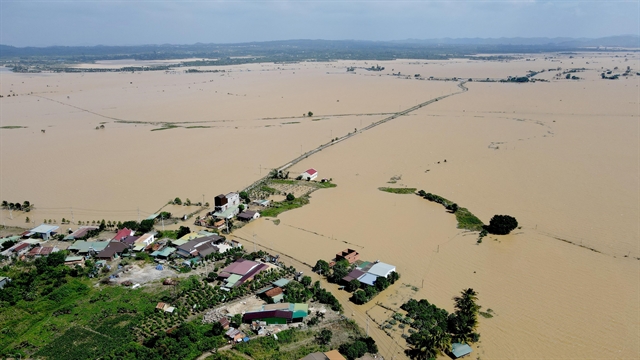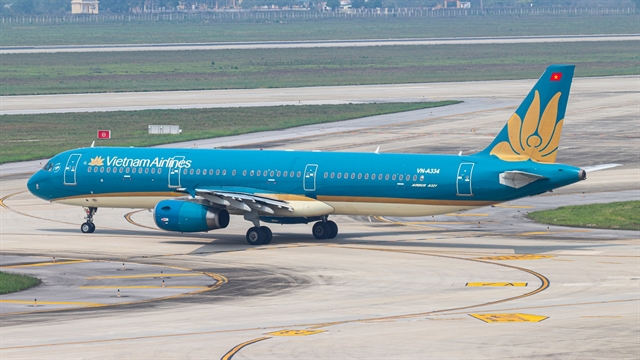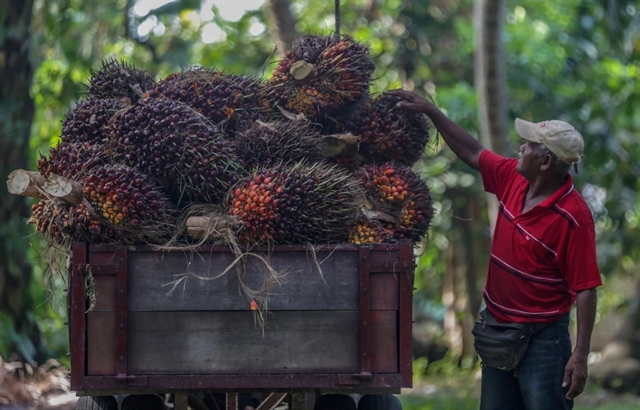 Society
Society

In Hà Nội, there are more and more residential quarters nestling in small alleys with the population equal to this of a ward.
 |
| Part of Hà Nội’s Thanh Xuân District which has seen an increased number of high buildings and apartment blocks. Higher population density plus improper infrastructure has resulted in regular traffic jams. — Photo dantri.com.vn |
HÀ NỘI - Traffic congestion is not a foreign sight for residents of narrow Vũ Trọng Phụng Street in Hà Nội’s Thanh Xuân District. On the one-km street, there are several apartment buildings—home to hundreds of residents—creating burden on infrastructure and traffic.
In Hà Nội, there are more and more residential structures nestled in small alleys with populations equal to those of wards.
Khương Trung Street in Thanh Xuân District is only 3m wide, with rough surface in many parts of the road. An apartment building with hundreds of households is located here. Soon, the street will be expected to bear the burden of about 250 other households which will move in to live at a 25-floor building near completion.
Local authorities of the Thanh Xuân Trung ward said that the ward’s population has increased sharply, with nearly ten high-rises opened in recent years.
In five years, the ward’s population has quintupled, reaching over 20,000 residents. The population is forecasted to rise to 80,000 households by next year.
Residents on Trường Chinh street in Đống Đa District have also suffered from the same situation for many years. Despite great street expansions, more serious traffic jams still occur with surging number of high-rises in small alleys.
Similarly, Fodacon, Đà river, Gươm lake plaza, Hattoco apartment buildings—only a few hundreds of meters next to each other—one by one have grown on Trần Phú Street in Hà Đông District.
Apartment buyers have been lured by high-rise projects’ attractive advertising schemes. These developments are often pitched as conveniently near big shopping malls, universities and the city centre. In fact, infrastructure of densely-populated residential quarters has yet to meet dwellers’ demand.
However, many residents worry about the high risk of fire without escape.
A local named Hải, from an apartment building in Thanh Xuân District, said “I feel worried living here. The road is too narrow for such a high density of dwellers. I don’t know what I’ll do when trouble arises.”
Meanwhile many real estate companies keep looking for small pieces of land inside the city for new developments.
A business director at a real estate firm said these kinds of projects get built because investors do not care about building new infrastructure, only taking advantage of current infrastructure.
Đặng Hùng Võ, former Deputy Minister of Natural Resources and Environment, called it very difficult for ambulances and fire engines to approach these buildings. This fact shows lack of consideration in planning and ineffective management in project approval.
Many projects have not been invested properly without community houses while old schools and unprompted markets surround buildings. There are even no places for waste disposal, causing pollution, Trần Ngọc Hùng, chairman of the Việt Nam Construction Association said.
Regarding project planning, Trần Ngọc Chính, president of the Việt Nam Urban Development and Planning Association, opposes building high apartment buildings in confined areas downtown because they will create pressure on urban infrastructure.
Only smaller, shorter buildings must be built in small roads; building high rises on small roads shows a lack of planning, he said.
“Why does this situation continue? The reason is profits. Therefore, nothing will change unless local authorities take responsibility,” Chính said. - VNS




